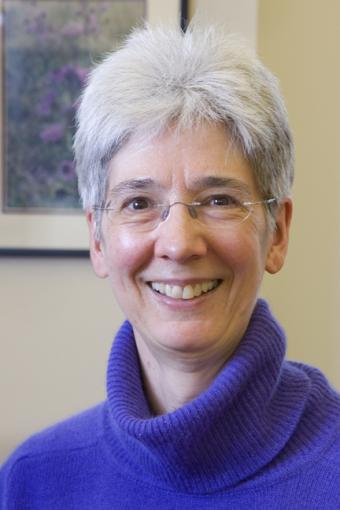PROVIDENCE, R.I. [Brown University] — Evolutionary ecologist Johanna Schmitt will address the Brown University Class of 2013, as well as incoming graduate and medical students, during the 246th Opening Convocation on Wednesday, Sept. 9, 2009, at 4 p.m. on The College Green. Schmitt’s address is titled “Natural Selection in an Age of Global Change.”
The Opening Convocation ceremony begins with the traditional procession of incoming students through the Van Wickle Gates onto The College Green, where University President Ruth J. Simmons will declare the 246th academic year officially open. This year, Brown welcomes 1,497 first-year students, 541 graduate students, 97 medical students, 93 transfer students, and six students in the Resumed Undergraduate Education program.
During the ceremony, assembled students will see a newly renovated Rhode Island Hall, home of the Artemis A.W. and Martha Sharp Joukowsky Institute for Archaeology and the Ancient World, and have at their backs the ongoing transformation of Faunce House into the The Stephen Robert ’62 Campus Center — two milestone projects being completed as part of the University’s Plan for Academic Enrichment.
Editors: Two areas will be reserved for press — one near the stage for the ceremony and address and one inside the Van Wickle Gates for the student procession. Credentials will be required for those areas. Please contact Deborah Baum in the Office of Media Relations — (401) 863-2478 or by e-mail — to arrange credentials. Credentials will be available in the Office of Media Relations beginning Wednesday morning.
Johanna Schmitt
Schmitt, director of Brown’s Environmental Change Initiative and the Stephen T. Olney Professor of Natural History, studies the evolution of life history traits in natural plant populations. The development, growth, and habits of plants are determined by a combination of their genetic abilities (and vulnerabilities) with the environments in which they grow. Schmitt’s laboratory explores the interplay between climatic and genetic variation in the model plant Arabidopsis. Synthesizing field and laboratory experiments with predictive modeling, she investigates how global climate change may influence the distribution and success of plants.
The author of more than 80 research articles, Schmitt is also the recipient of a Humboldt Research Award, past president of the Society for the Study of Evolution and the American Society of Naturalists, a fellow of the American Association for the Advancement of Science, and a member of the National Academy of Sciences. Schmitt earned her Ph.D. in biology from Stanford University and conducted research at Duke University before joining the Brown faculty in 1982.
Class of 2013
A total of 24,988 students applied to be part of Brown’s Class of 2013. The University admitted 2,790 (11.2%) yielding a matriculating class of 1,497.
Other Class of 2013 statistics:
- Gender: 726 men (48%) and 776 women (52%);
- Diversity: 31 percent of the Class of 2013 are students of color.
- Fourteen percent of students are first-generation college students.
- Academic interest: The most popular intended areas of concentration are engineering, international relations, economics, and biology. About 10 percent of the Class of 2013 is undecided.
- Geographic Area: The Class of 2013 hails from 48 U.S. states and 56 countries. Thirteen percent of students are international. The top foreign countries represented are the People’s Republic of China, the Republic of Korea, Canada, India, and Singapore.
The Graduate School
A total of 7,180 students applied to begin master's and doctoral programs at Brown. The University admitted 1,238 (17%), yielding a matriculating class of 541. Selectivity for Ph.D. programs was 12.5 percent. Thirty-five percent of incoming graduate students are international. The top foreign countries represented are the People’s Republic of China, India, the Republic of Korea, the United Kingdom, and Canada.

